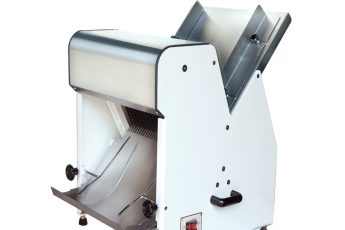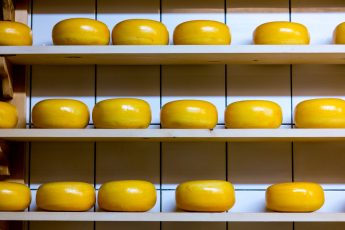Types of Commercial Meat Slicers
There are several different types of commercial meat slicers. Each has its benefits and features. Manual slicers are the simplest type and require manual turning, which can be a problem for inexperienced users. Also, these slicers don’t slice as evenly as other commercial slicers, so they might tear the food. For this reason, a manual slicer is the best choice if you want to cut slices very thinly.

Serrated blades are good for cutting through tough bread crust
If you’re slicing thick, hard pieces of meat, look for a commercial meat slicer with a serrated blade. They’re also good for cutting through bread crust and tough meats, like venison. Serrated blades make for a cleaner slice, but you’ll have to be patient while they do the work. Serrated blades also tend to cut through harder materials, such as cheese and bread crusts.
Serrated blades on commercial meat slicer models are excellent for cutting through bread crusts. These slicers have serrated blades that make cutting through bread crust a breeze. This type of blade is also good for cutting through thick, crusty breads, like baguettes. A serrated blade is better at overcoming the limitations of a low-powered motor. Smaller, lighter slicers will overheat if used intensively, so take breaks every so often to allow the slicer to cool down.
Serrated blades are better for slicing softer foods, such as bread. Serrated blades are also good for cutting through tough bread crusts, because the serrated edge will grab the top layer without scratching the bottom. However, it’s important to keep in mind that a serrated blade does not always equal better slicing power.
While meat slicers are generally best for slicing meat, they are also great for cutting through bread crusts. Serrated blades on commercial meat slicers are also great for cutting through thick, crusty bread. Just remember to clean the blades thoroughly. In the meantime, it’s worth freezing bread overnight to make it easier to slice. The serrated blades on commercial meat slicers are better at cutting through tough bread crusts.
The serrated blades on commercial meat slicers provide a nice, clean edge that can saw through thick bread crusts without compressing the tender crumb. A finely sharpened blade will not damage a hard crust, but a coarse-edged blade will require upward pressure to cut through it. However, you should also look for a bread knife that can level cake layers.
Straight edge blade is good for cutting through tough meats
A good knife has three main elements: a sharp edge, tang, and material. If you are trying to slice thin slices of meat, the straight edge may be your best bet. However, there are some foods where you may want to use a scalloped edge. For example, butternut squash needs a straight-edge knife, and salmon needs a scalloped-edge knife. The following are the three main types of knives:
Straight edge blades are the most common type of knife. They offer a smooth, even cut, and are perfect for slicing meat, vegetables, and bread. Straight edge knives are more versatile, but can take a little more sharpening than serrated-edge knives. Serrated-edge knives are good for thick or fibrous materials but are not as sharp as a straight edge. They are also harder to sharpen, so it is best to buy a knife that can handle both types of cutting surfaces.
A good straight edge knife is made of stainless steel. This material has excellent stain and rust-resistance. They are also extremely durable. The straight edge blades are also good for cutting through tough meats. You can find many styles and types on the market and make a smart choice by comparing them. Once you’ve made your choice, you’re ready to go! But first, choose the knife that suits your needs best.
A boning knife is an excellent choice for removing the bones and cartilage from a cut of meat. Boning knives have a thin, flexible blade that can easily maneuver around bones. The size of the boning knife is proportional to the size of the bone you’re removing. The larger the cut of meat, the stiffer the blade is, and vice-versa. However, a boning knife is good for delicate cutting jobs.
A serrated knife requires less sharpening than a straight edge knife. However, serrated blades can become dull after prolonged use. Serrated knives need to be sharpened by a professional. In addition, the serrated edge can’t be sharpened evenly and may need to be professionally repaired. Serrated knives should be hand-washed, as dishwater detergent can be bad for them.
Life expectancy of a commercial meat slicer
A commercial meat slicer can last between five and ten years, depending on the type of food it slices and its frequency of use. Its lifespan will also depend on the operator and the maintenance the slicer receives. The lifespan of a slicer depends on many factors, including the type of meat sliced, the size of the slices, and the blade material. A commercial slicer can be useful for more than one type of business, but if the space in the kitchen is limited, an electric slicer will provide more efficiency.
A commercial meat slicer can be useful for cutting cheese, vegetables, and fruits. However, its effectiveness with frozen meat is not so good. For that, a cold-cut or a sliced frozen meat, such as wagyu, may be the better option. A commercial slicer can only cut thin slices; it is not meant to chop bones. Keeping it clean after each use will ensure that it will last a long time.
A commercial meat slicer is ideal for busy kitchens. Oftentimes, these machines are built with heavy-duty materials. A commercial slicer will be durable and come with a commercial warranty. Specialty meat slicers are available for specific types of meat. You can buy these slicers at a specialty store. But if you are looking for a cheaper option, it is likely to be an inferior cut.
A quality commercial meat slicer will last for decades with proper maintenance. A stainless-steel slicer is more durable than a plastic one. A high-quality slicer will last for several years, and a commercial one should last you for at least five years, or more. It’s possible to make a commercial meat slicer last for many years, but it’s not guaranteed. So, make sure to choose carefully and read reviews.
Cleanliness of the meat slicer should be a priority for food service businesses. Slicers are notoriously difficult to clean and have been associated with outbreaks of food-borne illnesses. The FDA code requires operators to wash commercial slicers every four hours, but does not specify what cleaning chemicals are necessary. Cleanliness should be done according to the manufacturer’s instructions to prevent the spread of sanitary risks.
Cost of a commercial meat slicer
The price of a commercial meat slicer can range from under $100 to over three thousand dollars for the best models. The cheaper models will work well for a smaller business and can be purchased for under three hundred dollars. However, there are advantages to investing in a higher quality slicer that will last for decades. Stainless steel blades and a durable motor are the main benefits of meat slicers that cost under $500.
When buying a commercial meat slicer, make sure to consider the blade size and the number of slices it can make. A larger blade will result in cleaner slices and fewer sharpening sessions. A deli meat slicer uses 250W of power and can cut through most types of meats and some cheeses. These slicers are generally more expensive than home slicers, but the large blade will more than make up for the extra cost.
The cost of a commercial meat slicer can range from less than $50 to several hundred dollars, depending on the model and its features. Some models cost around two hundred dollars, while others cost up to five hundred. These slicers have multiple safety features and powerful motors, which allow them to slice meat for many hours without overheating. In addition to meat, these slicers can also cut cheese and bacon.
When looking at prices, you should consider whether you need a full-sized or a single unit. The latter cost less than one full-size unit, so you can save more money if you buy multiples. Also, look for companies that offer free delivery and a warranty to ensure that you’ll get the slicer you need for a long time. Purchasing a high-quality commercial meat slicer will save you money and give you years of reliable service. Brands to consider include Avantco, Berkel, Bizerba, Globe, and Hobart.
The power of a meat slicer’s motor is another important factor. The power of a slicer’s motor determines how fast the blade can rotate and whether it will produce even, thin slices. If the slicer does not have enough power, you’ll have trouble creating thin, even slices. The mid-range level of power is 120 watts, which is a decent middle-of-the-road choice. More power means faster slicing speeds, while less power means slower work.








